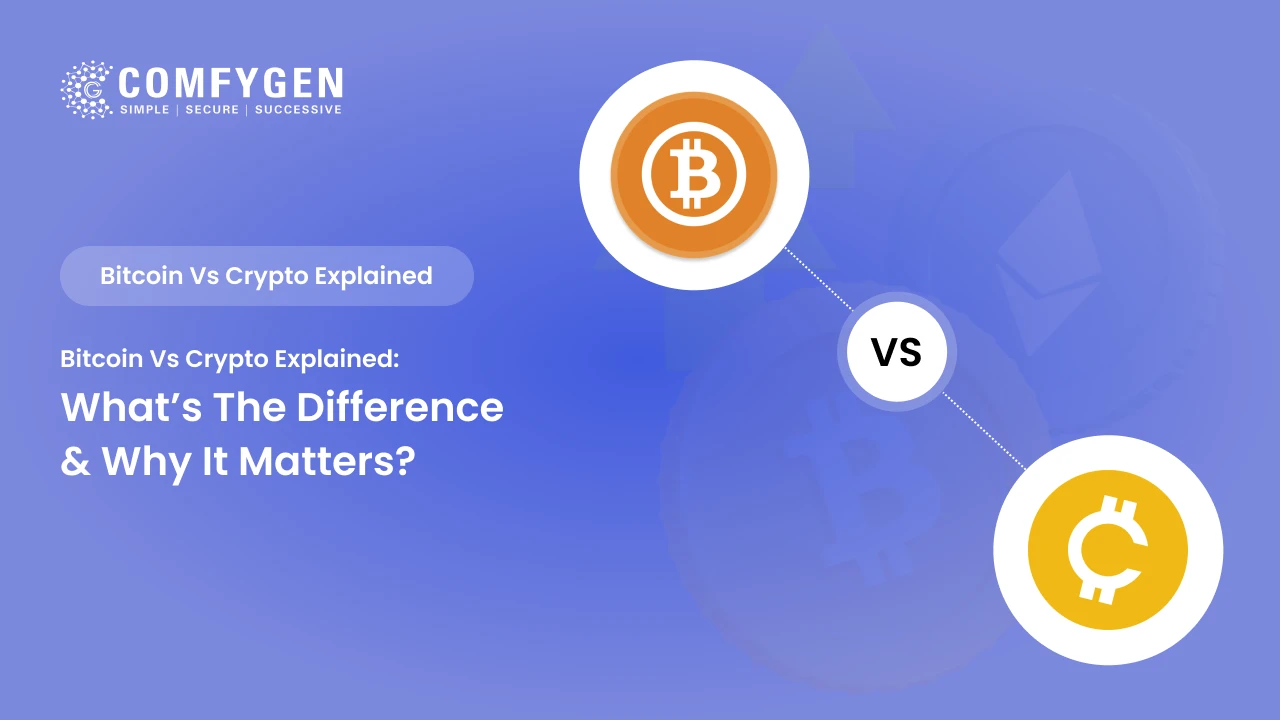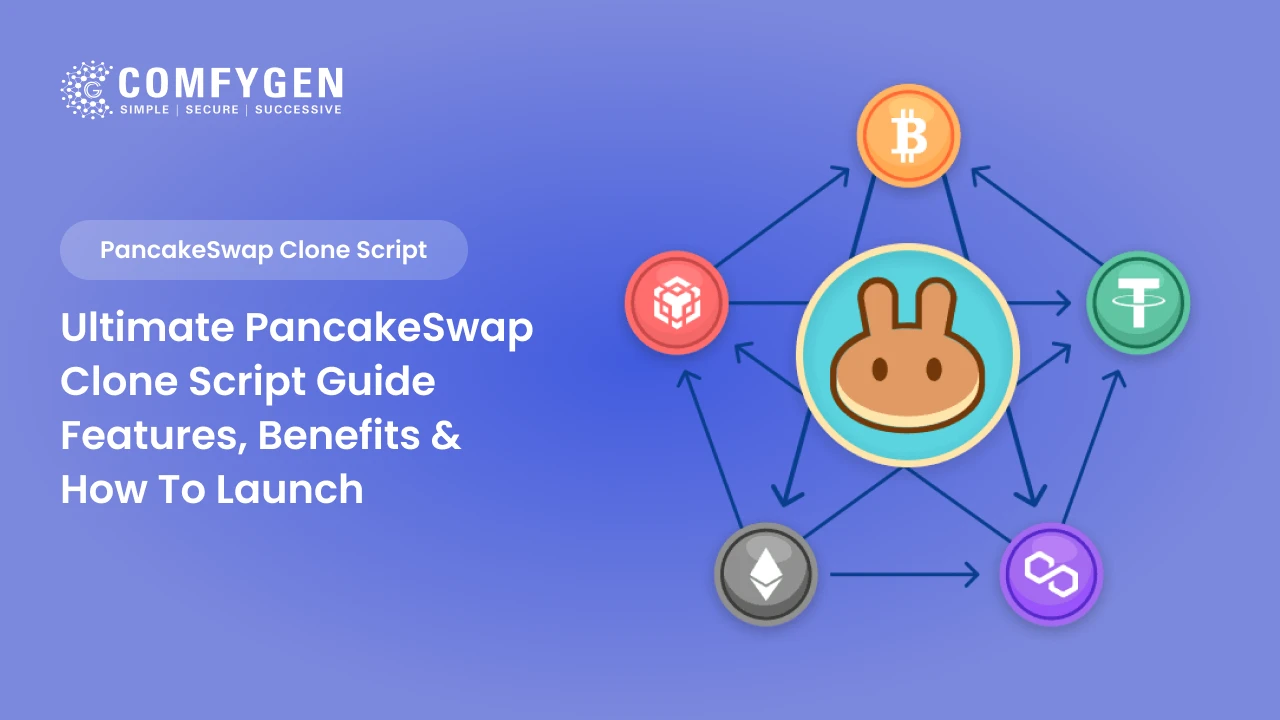How to Choose a Blockchain Platform for your Business

Choosing a suitable blockchain platform for your business involves several key considerations. Firstly, assess the scalability and performance of the blockchain platform to accommodate your business’s future growth. Additionally, evaluate the platform’s security measures and consensus mechanism to ensure robust protection against potential threats. Compatibility with your Blockchain and Cryptocurrency industry requirements and the ability to integrate with existing systems is also crucial. Consider the Blockchain platforms community to support, as a strong community can aid in troubleshooting and development. Furthermore, analyze the cost structure, including transaction fees and development expenses. Lastly, opt for a platform with a user-friendly interface and adequate documentation for streamlined adoption and development. Balancing these factors will aid in selecting a blockchain platform aligned with your business requirements.
Purpose and Scope of the Guide:
The purpose of this guide is to provide businesses with a comprehensive understanding of the importance of selecting the right blockchain platform. It aims to educate readers on the fundamentals of blockchain technology, the various aspects to consider when choosing a platform, and the potential impacts on business operations. By the end of this guide, readers should be equipped with the knowledge to make informed decisions that align with their business goals and requirements.
The Importance of Choosing the Right Blockchain Platform:
Selecting the right blockchain platform is a critical decision that can significantly influence the success of a business venture. The blockchain platform serves as the foundation for various applications, including supply chain management, identity verification, financial transactions, and more. An ill-suited platform can lead to inefficiencies, security vulnerabilities, and limited scalability, hindering a business’s growth potential.
The right platform ensures compatibility with the business’s specific needs, industry regulations, and technical capabilities. It can result in enhanced data security, reduced transaction costs, increased transparency, and improved operational efficiency. Moreover, the blockchain landscape is continually evolving, with new platforms and technologies emerging. Making the wrong choice could result in technical debt, requiring costly migrations or redevelopments.
Understanding Blockchain Technology:
Blockchain technology is a decentralized and distributed digital ledger that records transactions in a secure and tamper-resistant manner. It operates on the principles of transparency, immutability, and consensus. Transactions are grouped into blocks and linked chronologically, forming a chain of blocks. This structure ensures that once data is recorded, it becomes extremely challenging to alter without consensus from the network participants.
Key Components of Blockchain Technology Include:

Key components of blockchain technology include decentralized and distributed ledger, cryptographic security, consensus mechanism, and smart contracts. The decentralized and distributed ledger ensures that multiple copies of the same digital ledger are stored on various computers or nodes, increasing transparency and reducing single points of failure. Cryptographic security provides encryption and digital signatures to protect the integrity and confidentiality of data on the blockchain. The consensus mechanism establishes a protocol for nodes to agree on the validity of transactions and updates to the ledger. Smart contracts, which are self-executing agreements with predefined rules, automate processes and improve efficiency on the blockchain. Together, these components form the foundation of blockchain technology, enabling secure and transparent peer-to-peer transactions without the need for intermediaries.
Decentralization: Unlike traditional centralized systems, blockchain operates on a decentralized network of nodes. This prevents a single point of failure and enhances resilience.
Consensus Mechanisms: These are protocols that ensure all network participants agree on the state of the ledger. Common mechanisms include Proof of Work (PoW) and Proof of Stake (PoS).
Smart Contracts: Self-executing contracts with predefined rules that automatically trigger actions when specified conditions are met.
Cryptographic Hash Functions: These secure the data in each block and link blocks together, forming the chain. They make altering data practically impossible.
Public vs. Private Blockchains: Public blockchains (e.g., Bitcoin, Ethereum) are open to anyone and provide transparency but may have scalability limitations. Private blockchains offer controlled access, ideal for consortiums or enterprise use.
Key Considerations in Choosing a Blockchain Platform
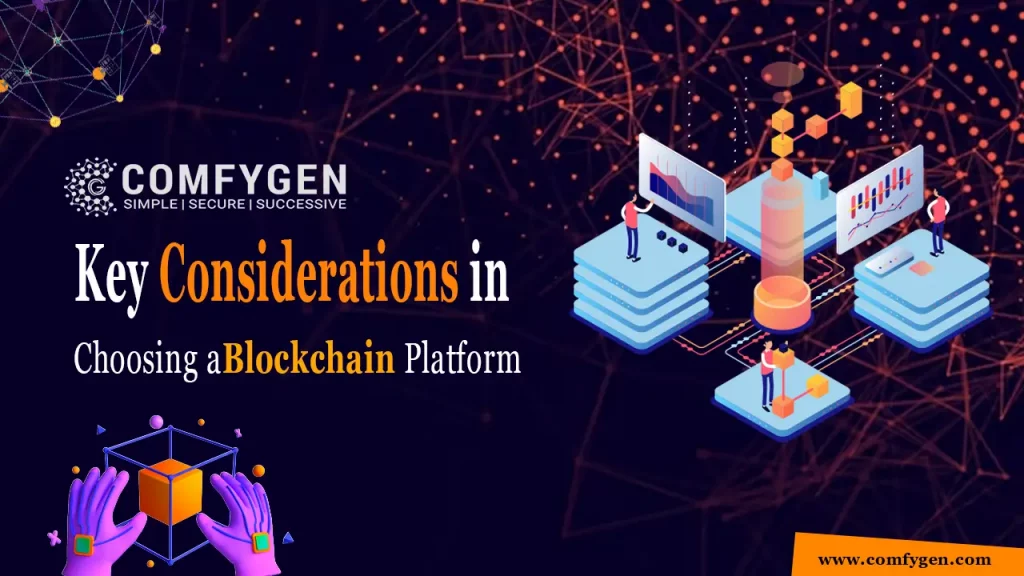
Key considerations in choosing a blockchain platform include scalability, security, consensus mechanism, interoperability, and development tools. Scalability refers to the platform’s ability to handle a large number of transactions and grow with increasing demands. Security is crucial, with features like encryption, authentication, and data privacy being essential to protect sensitive information. The consensus mechanism determines how transactions are validated and added to the blockchain, with options like Proof of Work, Proof of Stake, or other consensus algorithms. Interoperability ensures that the blockchain can communicate and exchange data with other platforms or networks. Lastly, the availability of user-friendly development tools and programming languages can significantly impact the ease and speed of application development on the blockchain platform. Considering these factors allows organizations to make informed decisions when choosing the most suitable blockchain platform for their specific needs.
Scalability and Performance: Evaluate a platform’s capacity to handle the expected transaction volume without compromising performance. Consider the throughput, latency, and potential bottlenecks.
Security and Consensus: Assess the platform’s security measures and consensus mechanism. Strong encryption and a consensus mechanism suited to your business needs are crucial for maintaining data integrity.
Industry Fit: Ensure the chosen platform aligns with your industry’s regulatory requirements, standards, and operational demands.
Interoperability: The ability to integrate with existing systems and other blockchain networks can impact the efficiency of data exchange.
Community and Support: A vibrant and active community can provide valuable resources, development tools, and assistance when troubleshooting.
Costs: Consider the platform’s cost structure, including transaction fees, development expenses, and potential licensing fees.
Usability and Documentation: An intuitive user interface and comprehensive documentation can streamline adoption and development processes.
Definition and Principles of Blockchain

Blockchain is a decentralized and distributed digital ledger technology that records transactions across multiple computers in a secure and transparent manner. It operates on a set of fundamental principles:
Decentralization: Unlike traditional centralized systems, blockchain is distributed among a network of participants (nodes) who collectively maintain and validate the ledger. This eliminates the need for a central authority and reduces the risk of single points of failure.
Transparency: Transactions recorded on the blockchain are visible to all network participants. This transparency enhances trust and accountability within the network.
Immutability: Once a transaction is recorded on the blockchain, it becomes nearly impossible to alter without consensus from the majority of participants. This ensures the integrity and authenticity of the data.
Consensus Mechanisms: Blockchain networks use consensus mechanisms to ensure that all participants agree on the state of the ledger. Common mechanisms include Proof of Work (PoW) and Proof of Stake (PoS).
Cryptographic Security: Each block in the blockchain is secured using cryptographic hash functions. This ensures that the data within the block is protected from tampering.
Benefits and Applications of Blockchain

Blockchain technology offers numerous benefits, making it applicable to various industries and use cases:
Data Security: Blockchain’s cryptographic security prevents unauthorized access and tampering of data, ensuring the integrity of transactions.
Transparency: The transparent nature of blockchain enables participants to track and verify transactions, enhancing trust in business operations.
Decentralization: Decentralization removes intermediaries, reducing costs, and enhancing efficiency by enabling direct peer-to-peer transactions.
Smart Contracts: These self-executing contracts automate processes based on predefined conditions, reducing the need for manual intervention.
Efficiency and Cost Savings: Blockchain streamlines processes, minimizes paperwork, and reduces intermediaries, leading to cost and time savings.
Supply Chain Management: Blockchain can enhance traceability and transparency in supply chains, reducing fraud and ensuring product authenticity.
Identity Management: Blockchain can securely manage and verify digital identities, reducing identity theft and streamlining identity verification processes.
Financial Transactions: Blockchain can expedite cross-border payments, reduce transaction fees, and enable faster settlement times.
Healthcare: Securely sharing patient data among healthcare providers can improve patient care and reduce administrative inefficiencies.
Voting Systems: Blockchain can create tamper-proof and transparent voting systems, enhancing the security and integrity of elections.
Identifying Business Needs and Objectives
When considering a blockchain platform for your business, it’s crucial to align the technology with your specific needs and objectives:
Problem Statement: Identify the specific challenges or inefficiencies in your business processes that blockchain could address. Focus on areas where transparency, security, and traceability are vital.
Strategic Goals: Determine how blockchain aligns with your long-term business objectives. Whether it’s cost reduction, process optimization, or entering new markets, ensure blockchain supports your strategy.
Industry Relevance: Evaluate how blockchain applies to your industry. Certain industries, such as finance and supply chain, have well-established use cases, while others might require more creative applications.
Technical Feasibility: Assess your organization’s technical capabilities and resources. Consider factors like development expertise, integration complexity, and the availability of suitable platforms.
Collaboration Opportunities: Explore the potential for collaboration with partners, suppliers, or other stakeholders. Blockchain’s strength lies in its ability to enable trust and data sharing among multiple parties.
Regulatory Compliance: Ensure that your chosen blockchain platform aligns with industry regulations and data privacy standards relevant to your operations.
Scalability: Consider the future growth of your business and evaluate if the chosen blockchain platform can scale to accommodate increased transaction volumes.
Budget and ROI: Analyze the costs associated with implementing and maintaining the blockchain solution. Consider the potential return on investment in terms of cost savings, efficiency gains, and competitive advantages
Assessing Your Business Requirements and Defining Goals for Blockchain Implementation
In today’s rapidly evolving digital landscape, businesses are constantly seeking innovative solutions to streamline operations, enhance security, and improve transparency. Blockchain technology has emerged as a promising tool that addresses these needs, offering a decentralized and immutable ledger system that can transform industries ranging from finance to supply chain management. However, before diving into the realm of blockchain implementation, it’s crucial for businesses to assess their specific requirements and clearly define their goals and objectives.
Assessing Business Requirements:
The journey towards successful blockchain integration begins with a thorough assessment of the business’s unique requirements and pain points. This involves understanding current processes, identifying inefficiencies, and pinpointing areas where blockchain can provide value. For instance, supply chain management could benefit from enhanced traceability and real-time tracking, while financial institutions might prioritize security and fraud prevention.
Conducting a comprehensive analysis also involves evaluating the existing IT infrastructure and determining the compatibility of blockchain with the current systems. Additionally, assessing the regulatory environment and potential legal implications is essential to ensure compliance throughout the implementation process.
Defining Goals and Objectives:
Once the business requirements are clear, defining the goals and objectives of the blockchain implementation becomes paramount. These goals should be aligned with the identified pain points and opportunities. Common objectives include:
Enhanced Transparency: Blockchain’s transparent and tamper-proof nature can improve trust among stakeholders by providing real-time access to verified data.
Improved Security: Blockchain’s cryptographic features offer robust security against unauthorized access and data manipulation, reducing the risk of breaches.
Efficiency Gains: Automation and smart contracts can streamline processes, reducing the need for intermediaries and minimizing errors.
Cost Reduction: By eliminating intermediaries and automating processes, blockchain can lead to significant cost savings over time.
Traceability and Compliance: Blockchain’s immutable ledger ensures an audit trail, aiding in regulatory compliance and quality control.
Decentralization: Businesses aiming to reduce central points of control may leverage blockchain’s decentralized architecture.
Innovation: Implementing blockchain can position a business as an industry innovator, attracting customers and partners.
Types of Blockchain Platforms
Once the goals are defined, the next step is selecting the appropriate type of blockchain platform. There are primarily three types of blockchain platforms:
Public Blockchains: These are open networks where anyone can participate, verify transactions, and read the entire blockchain history. Public blockchains like Ethereum and Bitcoin are known for their decentralization and transparency. They are suitable for applications where openness and decentralization are key.
Private Blockchains: Private blockchains restrict access and participation to a select group of known entities. They offer higher privacy and control over data, making them suitable for businesses that require confidentiality, like enterprises working on supply chain optimization or sensitive financial applications.
Consortium Blockchains: Consortium blockchains are a hybrid between public and private blockchains. A group of organizations collaboratively maintains the blockchain, providing a balance between decentralization and controlled access. This model is often adopted in industries where multiple stakeholders need to share data securely, such as healthcare or logistics.
Public, Private, and Consortium Blockchains
Public blockchains are open networks where anyone can participate, validate transactions, and maintain the blockchain. They are inherently decentralized, ensuring high levels of transparency and security. Bitcoin and Ethereum are notable examples of public blockchains. Transactions on public blockchains are publicly visible, fostering trust and accountability, but they can be slower and more energy-intensive due to the need for consensus among a large number of nodes.
Private blockchains, on the other hand, are restricted to a select group of participants. These networks offer greater control over who can participate and access the data. Organizations often use private blockchains to maintain confidentiality and streamline processes among trusted parties. The speed and efficiency of private blockchains are improved compared to public counterparts, but they sacrifice some of the decentralization benefits.
Consortium blockchains strike a balance between public and private. They are semi-decentralized networks where multiple organizations cooperate to maintain the blockchain. This approach offers benefits like shared control, enhanced security, and optimized resource utilization. Consortium blockchains are commonly utilized in industries where collaboration is essential, such as supply chain management.
Permissioned vs Permissionless Blockchains:
Permissioned blockchains require participants to obtain authorization to join the network and validate transactions. This results in higher efficiency and lower energy consumption since consensus can be achieved more swiftly among a limited number of known entities. These networks are well-suited for enterprises that prioritize scalability and controlled access. However, the trade-off is reduced decentralization, potentially leading to higher vulnerability if the permissioned entities collude.
Permissionless blockchains, as seen in most public networks, allow anyone to join and participate without requiring approval. This fosters inclusivity and decentralization, but often at the cost of scalability and efficiency. The consensus mechanisms employed in permissionless blockchains, like Proof of Work (PoW) or Proof of Stake (PoS), demand significant computational resources, leading to longer transaction processing times and environmental concerns.
Evaluating Suitability and Key Factors:
When choosing the appropriate type of blockchain, several key factors must be considered. Firstly, the level of decentralization required plays a crucial role. If a high degree of transparency and accountability is necessary, a public blockchain is more suitable. Conversely, if confidentiality and control are paramount, a private or consortium blockchain may be preferred.
Secondly, scalability and performance requirements must be assessed. Enterprises with heavy transaction loads might lean towards permissioned blockchains to ensure faster processing times. Conversely, applications that can tolerate slower transactions but demand global inclusivity might favor permissionless blockchains.
Data sensitivity is another essential consideration. Industries dealing with sensitive data, such as healthcare or finance, might choose private or consortium blockchains to maintain privacy and meet regulatory requirements.
Resource utilization is also crucial. Permissionless blockchains can be resource-intensive, both in terms of computational power and energy consumption. Organizations concerned about sustainability and operational costs may opt for permission or consortium solutions that are more efficient in resource management.
Interoperability and collaboration requirements should not be overlooked. Consortium blockchains are advantageous when multiple organizations need to work together while maintaining data integrity and security.
Scalability and Performance
Scalability is a paramount concern for blockchain platforms, Platforms like Ethereum have faced challenges with network congestion and high gas fees during peak usage periods. When evaluating platforms, consider their throughput, transaction speed, and ability to handle a growing number of users and transactions. Some platforms, like EOS and Binance Smart Chain, utilize delegated proof of stake (DPoS) consensus mechanisms to enhance scalability by selecting a limited number of validators.
Security and Privacy Features
Blockchain platforms must prioritize security and privacy to ensure the integrity of data and transactions. Assess the platform’s track record of security breaches and its approach to mitigating vulnerabilities. Platforms like Hyperledger Fabric are designed for enterprise use, focusing on permissioned networks that offer granular control over participants’ access. Zero-knowledge proofs, as seen in Zcash, enhance privacy by allowing transaction validation without revealing the actual data.
Consensus Mechanisms
Consensus mechanisms dictate how transactions are validated and added to the blockchain. Platforms employ various mechanisms, each with its own trade-offs. Proof of Work (PoW), as used by Bitcoin, offers high security but can be energy-intensive. Proof of Stake (PoS), embraced by platforms like Cardano, replaces energy-intensive computations with validators staking cryptocurrency. Practical Byzantine Fault Tolerance (PBFT), employed by platforms like Hyperledger Fabric, focuses on high throughput and fast finality suitable for enterprise applications.
Smart Contract Capabilities
Smart contracts are self-executing contracts with terms directly written into code. They enable automated, trustless interactions between parties. Ethereum pioneered this concept, and now various platforms offer smart contract capabilities. Evaluate the platform’s programming languages, developer tools, and documentation. Ethereum’s Solidity remains popular, while platforms like Tezos enable writing smart contracts in multiple languages, enhancing flexibility.
Interoperability with Existing Systems
For many projects, integrating blockchain with existing systems is crucial. Platforms offering interoperability solutions can streamline this process. Polkadot, for instance, employs a heterogeneous multi-chain framework that enables different blockchains to interoperate seamlessly. This is essential for applications requiring cross-chain communication and asset transfers.
Developer Community and Support
A thriving developer community is indicative of a platform’s vitality and potential for growth. Robust developer resources, such as documentation, tutorials, and active forums, foster innovation. Ethereum’s substantial developer community has led to a multitude of decentralized applications and services. Newer platforms like Solana are rapidly gaining developer traction due to their unique features and scalability.
Evaluating Available Platforms
When evaluating different platforms, take a holistic approach. Define your project’s requirements and goals first. For a public, decentralized application, Ethereum might be a suitable choice due to its broad adoption and extensive tooling. However, if you’re targeting enterprise solutions, Hyperledger Fabric’s permissioned approach and focus on privacy might align better with your needs.
Consider the platform’s governance structure. Some platforms are controlled by a central entity, raising questions about decentralization. Others, like Decred, implement hybrid governance models that combine community and stakeholder input.
Examine the platform’s adoption and partnerships. Platforms with industry collaborations, such as VeChain’s focus on supply chain management, demonstrate real-world usability and the potential for long-term viability.
Finally, assess the platform’s roadmap and updates. Regular protocol upgrades signal an active development team committed to improving the technology and addressing emerging challenges
Researching and Shortlisting Potential Platforms
The first step in this is conducting thorough research to identify blockchain platforms that align with your project’s requirements and goals. Start by defining your project’s scope, objectives, and technical needs. Consider factors such as the type of application (public or private), scalability requirements, consensus mechanisms, and specific industry use cases.
Once your requirements are clear, explore the diverse landscape of blockchain platforms available. Prominent options include Ethereum, Binance Smart Chain, Cardano, Polkadot, Hyperledger Fabric, and more. Each platform has unique strengths and weaknesses, so it’s crucial to assess their features and attributes in relation to your project.
Analyzing Platform Features and Capabilities
- Consensus Mechanisms
- Scalability
- Smart Contract Functionality
- Interoperability
- Security
- Governance Model
- Community Support
- Adoption and Partnerships
Proof of Concept (PoC) and Prototyping
Once you’ve narrowed down your choices, it’s time to create a Proof of Concept (PoC) or prototype to validate the feasibility of your project on the chosen platform. The PoC serves as a small-scale demonstration of your concept’s viability, while a prototype is a more advanced version that simulates the final product’s functionality.
The Importance of PoC in Platform Selection, Testing, and Cost Considerations in Blockchain Platforms
In the rapidly evolving landscape of technology, particularly within the realm of blockchain, choosing the right platform is a pivotal decision that can significantly impact the success of a project. Given the myriad options available, careful consideration must be given to several factors, including Proof of Concept (PoC), platform performance testing, and cost considerations.
Proof of Concept (PoC)
Proof of Concept serves as the initial litmus test for any blockchain platform under consideration. A well-executed PoC helps identify potential technical hurdles. Through PoC, developers can ascertain if the platform’s features, such as consensus mechanisms, scalability, and security protocols, align with the project’s needs. Moreover, PoC aids in engaging stakeholders and investors by offering a tangible glimpse into the platform’s potential. By addressing any early challenges during this phase, the likelihood of a smoother implementation and reduced future setbacks increases.
Testing and Validating Platform Performance
Performance testing is an integral part of the platform selection process. It involves assessing a platform’s capabilities under varying conditions to ensure that it meets expectations for speed, scalability, and reliability. Blockchain’s distributed nature necessitates rigorous testing to identify potential bottlenecks or vulnerabilities that could hinder its performance in real-world scenarios.
Scalability, a critical factor for blockchain applications, can be evaluated through load testing. By subjecting the platform to an increasing number of transactions, developers can gauge how well it handles increased demand.
Cost Considerations
Cost considerations play a pivotal role in platform selection, development, and maintenance. Blockchain platforms can vary greatly in terms of licensing fees, development costs, and ongoing maintenance expenses.
Open-source platforms may seem more cost-effective initially, but they might require extensive customization and maintenance efforts. Assessing the total cost of ownership, which includes development, deployment, maintenance, and potential upgrades, is essential for making an informed decision.
Moreover, the cost of running and maintaining a blockchain network, including transaction fees, storage costs, and computational expenses, must be factored in. The efficiency and scalability of the chosen platform can significantly impact these ongoing costs. Organizations should consider not only the immediate financial implications but also the long-term sustainability of their chosen platform.
Exploring the Financial Aspects of Blockchain Implementation: Initial Setup, Ongoing Maintenance, Licensing Fees, ROI Analysis, and Case Studies
Implementing a blockchain platform entails not only technological considerations but also financial ones. The costs associated with setting up and maintaining a blockchain solution, including licensing fees and usage charges, must be carefully evaluated. Additionally, conducting a Return on Investment (ROI) analysis and exploring real-world case studies can provide valuable insights into the practical implications of blockchain adoption.
Initial Setup and Ongoing Maintenance Costs
The initial setup of a blockchain platform involves expenses related to infrastructure, development, and deployment. These costs encompass hardware, software, and personnel for building and configuring the blockchain network. The complexity of the chosen platform and the scale of the project can significantly influence these expenses. Moreover, initial setup costs can include the integration of smart contracts, user interfaces, and other components tailored to the specific use case.
Licensing Fees and Usage Charges
Licensing fees vary depending on whether the chosen platform is open-source or proprietary. Open-source platforms generally offer their software for free, but customization, support, and additional features might incur charges. Proprietary platforms often have licensing fees that cover the use of their technology, along with potential maintenance and support services.
a critical consideration for public blockchain networks, including transaction fees and computational costs. Public networks like Ethereum require gas fees for executing smart contracts and transactions. These charges can accumulate, impacting the overall operational expenses of the blockchain solution.
ROI Analysis for Blockchain Implementation
Conducting an ROI analysis is crucial for assessing the financial viability of blockchain implementation. While the initial costs might seem substantial, potential benefits can outweigh these expenses over time. ROI analysis considers factors such as increased efficiency, reduced operational costs, enhanced security, and new revenue streams.
supply chain management can benefit from blockchain’s transparency and traceability. By reducing fraud and ensuring product authenticity, companies can enhance their brand value and customer trust. Similarly, in financial services, blockchain’s ability to streamline transactions and reduce intermediaries can lead to significant cost savings.
Case Studies and Use Cases
Real-world case studies provide tangible evidence of blockchain’s transformative potential. One prominent example is IBM’s Food Trust network, which enhances food traceability and safety. Through blockchain, supply chain participants can track the journey of food products from farm to table, reducing the time and resources required for recalls and investigations.
In the financial sector, Ripple’s blockchain-based payment network enables faster and cheaper cross-border transactions. This has the potential to revolutionize remittance services by reducing fees and settlement times.
What Are the Benefits of Blockchain Implementations?
Blockchain technology has demonstrated its potential through successful implementations across various industries. Analyzing these real-world examples provides valuable insights into the benefits and challenges of adopting blockchain solutions. Additionally, learning from past projects and applying their lessons can guide organizations in making informed decisions when choosing a blockchain platform.
Real-world examples of successful blockchain implementations
Supply Chain Management: Walmart, a retail giant, implemented a blockchain solution to enhance the traceability of its food products. By tracking the movement of goods from source to shelf, the company reduced the time taken for recalls from days to mere seconds, enhancing consumer safety and minimizing financial losses.
Digital Identity: The United Nations World Food Programme developed a blockchain-based digital identity system for Syrian refugees. This system enabled refugees to receive aid without the need for traditional documentation, ensuring faster and more efficient aid distribution.
Financial Services: JPMorgan introduced Quorum, a blockchain platform for interbank payments. Quorum’s streamlined processes led to faster settlement times, reduced costs, and increased transparency among financial institutions.
Lessons Learned from Previous Projects
Clear Use Case Identification: Successful projects begin with a well-defined use case that aligns with the strengths of blockchain technology. Projects that lack a clear purpose or attempt to force-fit blockchain often face challenges in adoption and implementation.
Collaboration and Ecosystem Building: Blockchain projects that involve multiple stakeholders require strong collaboration and ecosystem building. Engaging all relevant parties from the outset ensures a comprehensive understanding of requirements and paves the way for successful implementation.
Making the Final Decision
Making the final decision in choosing a blockchain platform involves a comprehensive evaluation of factors such as alignment with business goals, technological fit, cost analysis, scalability, community support, and regulatory compliance. It necessitates a careful balance between immediate requirements and long-term sustainability. Conducting a Proof of Concept (PoC) can offer practical insights into the platform’s performance. Ultimately, the decision should be driven by a clear understanding of how the chosen platform addresses specific needs, potential returns on investment, and the capacity to drive innovation within the organization’s industry and ecosystem.
Evaluating Pros and Cons, Selecting a Suitable Platform, and Implementation in Blockchain Platforms
As businesses explore blockchain technology for their needs, a crucial phase involves evaluating shortlisted platforms, selecting the most appropriate one, and successfully implementing and integrating it into their operations. This process requires a balanced consideration of pros and cons, aligned with the organization’s goals.
Evaluating Pros and Cons of Shortlisted Platforms
Before making a decision, a thorough evaluation of the pros and cons of each shortlisted blockchain platform is imperative. Pros might include scalability, security, transparency, and potential for innovation. Conversely, cons could involve complexity, potential interoperability issues, and the need for specialized technical expertise.
Scalability is vital, as the platform must handle increased transaction volumes without compromising performance. Security measures, including encryption and consensus mechanisms, should align with the organization’s data protection requirements. Transparency through immutable records is a core advantage, but this could raise privacy concerns, particularly in sensitive industries.
Selecting the Most Suitable Platform for Your Business
The selection process should align with the organization’s specific needs and goals. Interoperability is a significant factor. Choose a platform that can seamlessly integrate with existing systems and other blockchain networks if necessary. Community support and documentation availability also contribute to a platform’s suitability. Conducting a Proof of Concept (PoC) allows firsthand testing of the platform’s capabilities, confirming its alignment with business requirements.
Implementation and Integration
Implementation involves translating the selected platform into a functional solution that addresses business needs. It includes developing smart contracts, and user interfaces, and integrating with existing systems. A well-defined implementation strategy, with clear milestones and responsibilities, is essential to streamline the process.
Integration with existing systems can be complex but is vital for seamless operations. Data migration, legacy system compatibility, and user training must be considered. Ensuring cross-functional collaboration between IT, operations, and business teams is essential for successful integration.
Testing is crucial before deployment. This includes functional testing to ensure the platform operates as intended, security testing to identify vulnerabilities, and performance testing to assess scalability. Rigorous testing mitigates risks and ensures a smooth transition.
Planning and executing the implementation process
The process of planning and executing the implementation of a blockchain platform is a strategic endeavor that involves defining objectives, assembling a capable team, and gathering requirements. In the planning phase, goals are clearly outlined, and a cross-functional team is formed to ensure comprehensive insights. Gathering requirements from stakeholders ensures the technology meets specific needs. Execution involves turning plans into action by developing and testing the platform. Smart contracts and user interfaces are created, rigorously tested, and refined. This phase lays the groundwork for successful implementation by addressing potential challenges and confirming the solution’s viability. Clear communication and collaboration are essential to align all stakeholders with the project’s progress and outcomes.
Integrating the Blockchain Platform with Existing Systems
Interoperability Planning: Evaluate how the blockchain platform will interact with existing systems. Determine data flows, APIs, and integration points.
Data Migration: Migrate relevant data from legacy systems to the blockchain platform. Data integrity and consistency are crucial during this process.
API Development: Develop APIs that enable seamless communication between the blockchain platform and other systems. This allows for real-time data exchange and process automation.
Legacy System Compatibility: Ensure the blockchain solution is compatible with existing technologies. This minimizes disruptions and facilitates a smooth transition.
User Training: Provide comprehensive training for employees who will use the new system. Familiarity with the platform’s features and functions is essential for maximizing its benefits.
Change Management: Implement change management strategies to mitigate resistance to the new technology. Communicate the advantages of the blockchain solution and address concerns.
Why Choose Comfygen for Blockchain Development?
Comfygen knows out as a top choice for blockchain development for several reasons. Firstly, their team comprises experienced and skilled blockchain developers who possess in-depth knowledge of blockchain technology and its applications. This expertise enables them to create robust and secure blockchain solutions tailored to client’s specific needs. Secondly, Comfygen emphasizes a client-centric approach, ensuring effective communication and collaboration throughout the development process. They prioritize understanding the client’s requirements and constraints to deliver results aligned with their expectations. Additionally, Comfygen remains up-to-date with the latest advancements in blockchain technology, enabling them to offer innovative solutions that leverage the full potential of this disruptive technology. Their commitment to quality, expertise, and client satisfaction sets Comfygen apart in the realm of blockchain development.
Final thoughts while Choosing a Blockchain Platform for your Business
Selecting a blockchain platform for your business necessitates a balanced approach. Assess its alignment with your specific goals, technical requirements, and scalability needs. Carefully weigh the platform’s benefits against potential challenges, factoring in costs, licensing fees, and ongoing maintenance. Conduct rigorous testing, including a Proof of Concept, to ensure its suitability. Collaborate with stakeholders and consider long-term sustainability over short-term gains. Smooth integration with existing systems, coupled with robust change management, is essential. By making a well-informed decision and executing a strategic implementation, you position your business to leverage blockchain’s transformative potential, fostering innovation, transparency, and competitive advantage.

Mr. Saddam Husen, (CTO)
Mr. Saddam Husen, CTO at Comfygen, is a renowned Blockchain expert and IT consultant with extensive experience in blockchain development, crypto wallets, DeFi, ICOs, and smart contracts. Passionate about digital transformation, he helps businesses harness blockchain technology’s potential, driving innovation and enhancing IT infrastructure for global success.
Based on Interest
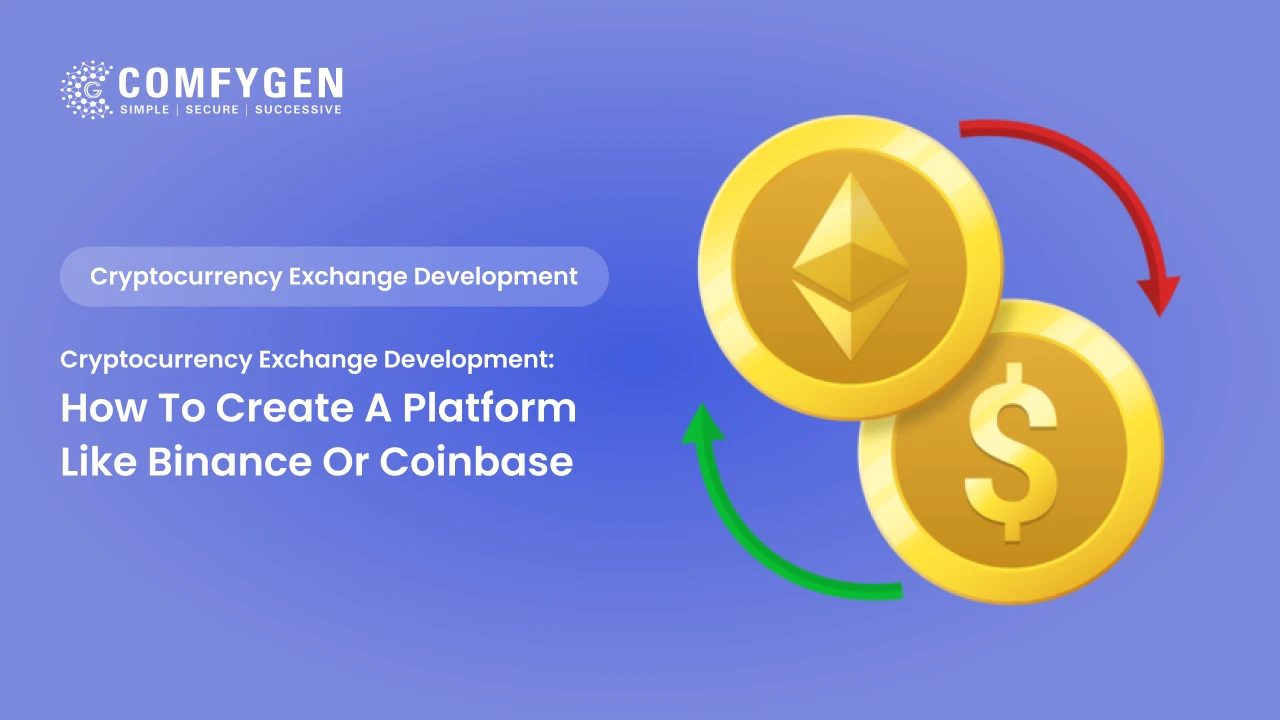
Cryptocurrency Exchange Development: How to Create a Platform Like Binance or Coinbase
The rise of cryptocurrency has revolutionized the financial world, creating new avenues for investment, trading, and technology-driven finance. Among the major…
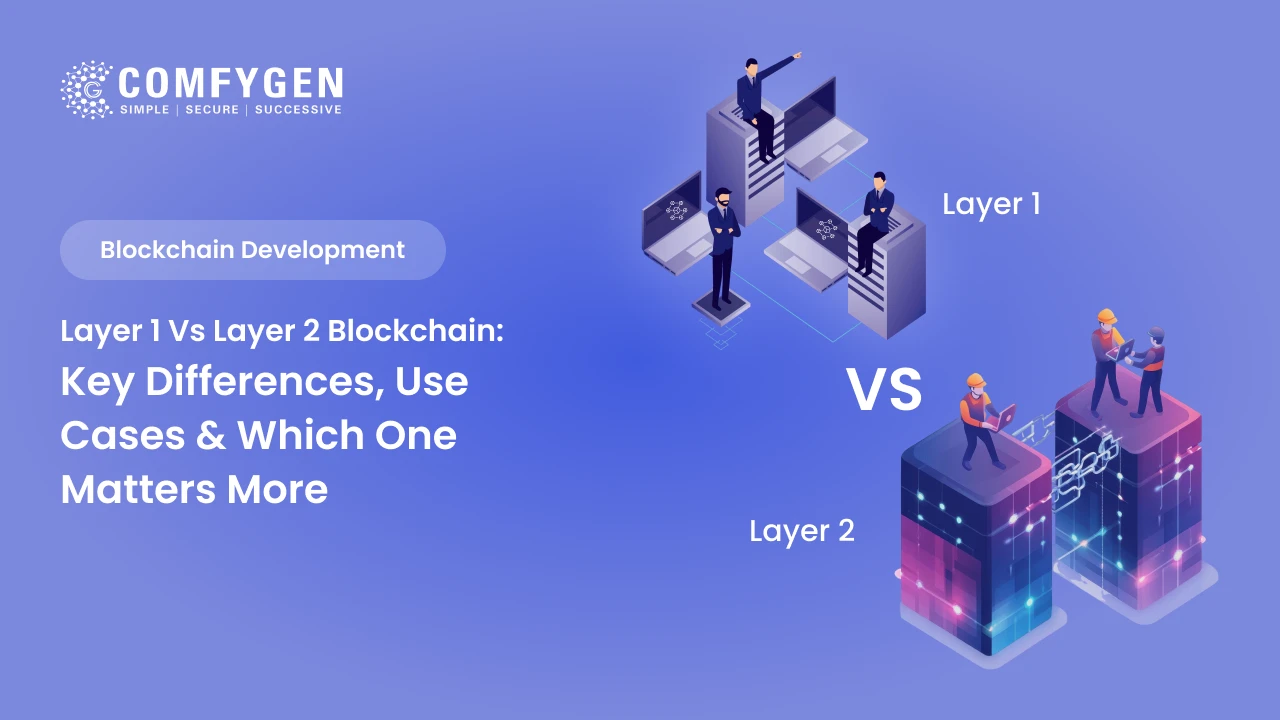
Layer 1 vs Layer 2 Blockchain: Key Differences, Use Cases & Which One Matters More in 2025
Introduction Blockchain technology, once the exclusive domain of cryptocurrencies, has now evolved into a robust tool for various industries, including finance, healthcare,…




